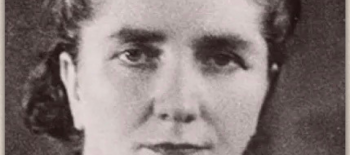Polish Cultural Institute New York invites you on the culinary heritage journey to explore the fall season with two great Polish chefs. Let’s go mushroom picking in the beautiful forests together with chef Maria Przybyszewska, who will talk about how the tradition of picking and processing mushrooms is still alive in Poland. Aleksander Baron will initiate us into fermentation process and use the beets to prepare sourdough from classic Polish borscht with potatoes. Enjoy beautiful Polish landscapes and culinary tradition, which, thanks to young chefs, can give a new interpretation of Polish recipes in the upcoming season.
Mushrooms
When autumn starts, Poles start foraging mushrooms. The next month till the end of November is going to be exciting for many people because Polish and American woods are filled with varieties of mushrooms: porcinis, chanterelles, saffron milk cups, boletes, honey mushrooms and many more. It is important to have a little knowledge about mycology and know the basics, mushrooms can be tricky, and it is easy to collect those uneatable, but somehow this knowledge is passed down from generation to generation so even young people know which mushroom is suitable to collect!
Recipe: Pan fried porcini with honey glazed cannellini beans, scallion oil, jalapeno, and cilantro
Ingredients:
for mushroom and beans:
3-4 medium size porcini mushrooms
4 tbl. butter
1 garlic clove
1/2 lb. raw cannellini beans
2 tbl. light soy sauce
3 tbl. raw honey
for scallion oil:
150 g spring onion or scallion (green parts only)
2 cups rapeseed oil
pinch of salt
Chop spring onion (separate the white and green parts). Add spring onion to a large pot, cover with oil, heat the mixture without bringing it to the boil. Strain with a fine-mesh strainer. Reserve the oil and discard the rest.
garnish:
1 jalapeno sliced
2 strings of cilantro
Soak cannellini beans overnight. Cook them in salted water for 30-40 minutes. Drain beans and cool them down. Cut the porcini mushrooms into 1/2-inch-thick slices. Season with salt and pepper. Heat 2 tbl. of butter, add mushrooms and crushed garlic clove. Fry until lightly browned, about 2 minutes per side. Transfer to a plate. Heat remaining butter and add cooked cannellini beans, fry them about 4 minutes till the skin starts breaking down then add soy sauce and raw honey. Fry 2 minutes more. Transfer beans to a plate, add porcini mushrooms, pour over scallion oil, add sliced jalapeno and cilantro leaves.
Maria Przybyszewska – chef and activist. Maria promotes healthy and conscious eating based almost entirely on a plant-based diet – from local products knowing the origin of each ingredient. Previously, she has worked in Yumiko and Opasly Tom restaurants in Warsaw, and also did an internship at Noma, a two-Michelin-star restaurant run by chef René Redzepi in Copenhagen, Denmark, which was ranked one of the best restaurants in the world.
Fermentation
Some names of the traditional Polish dishes are untranslatable, and this is the case of barszcz. In the English-speaking part of the world, you can run across many different spellings such as borscht, borshch, borsch, and borsht. The dish is always associated with the Eastern European cuisine, especially with Russia, Ukraine, and Poland. Also, you must remember that the style of barszcz varies depends on the country, furthermore, there are as many barszcze’s as families who cook this soup. This is a recipe for a Polish barszcz made with beetroot sour.
Barszcz can be cooked either with any kind of meat stock which is often made with some smoked parts. There is also a vegan version or as we call it lenten, cooked for Christmas Eve, made with vegetable and mushroom stock. Aleksander Baron likes to cook his barszcz on the smoked goose stock. The sweetness and strong aroma of fruitwood smoke, and a generous amount of goose fat are the perfect balance for the sharp flavor of beetroot sour. And we dare you, never forget about the garlic!
Barszcz is served with dumplings (called ears as they resemble piggy little ears), filled with mushrooms or sometimes meat. In Poland, it is common to serve barszcz with a baked pastry or, the latest preference, with potato purée, made with plenty of butter and herbs – marjoram, dill, and chives.
Recipe: Beetroot sour/beetroot kvas (1 jar)
Ingredients:
14 ounces beetroots
half head of garlic
tbsp salt
tsp ground black pepper
tsp allspice
6 bay leaves
Cut beetroots in small dice or thin slices. Throw all ingredients into the jar. Fill with water. Cover and wait two weeks.
stock:
36 oz short ribs
2 carrots
2 parsnips
2 onions
1 half of celeriac
1 leek Handful of dried mushrooms (porcini are the best)
Half head of garlic
Tsp black pepper
Tsp all spices
Pinch of bay leaves
Half tsp of cloves
Half tsp of nutmeg 1-star anise
Toast the spices in a large pot. Add the meat, fatty part to the bottom so it can render a little. Cut the vegetables and add them to the pot. Fry everything until golden brown then add (3 liters) 6 glasses of chilly water and bring to boil. Decrease the heat and let it simmer for 3,5 hrs. Strain the vegetables and put the stock aside.
7oz potatoes
Pint of whole milk
7oz of butter
Bunch of chives and dill
Peel the potatoes cut them into cubes. Cook potatoes in milk with a pinch of salt. Strain and mash the potatoes when cooked but keep the milk! Put the butter in the remaining milk and let it melt a little. Add the liquid to the mash and mix with a whisk. Then add chopped herbs.
1l stock
1l beetroot sour
Bring the stock to boil turn off the heat and add the beetroot sour. Never boil the barszcz – it loses the flavor and color when boiled. Just simmer it. Serve the soup with potato purée.
Aleksander Baron – head chef of Baron the Family in Warsaw, Poland. Previously, he ran Solec 44 and Zoni restaurant, operating at the Polish Vodka Museum. Author of the cookbook: Kiszonki i Fermentacje. He is known for using seasonal products and local suppliers, and following no waste philosophy. Besides being a chef, he is a Food Studies lecturer at SWSP University of Social Sciences and Humanities, food writer and TV presenter. In 2019, he was titled the Chef de L’avenir by Gault&Millau.
Polish Cuisine is initiated by the Polish Cultural Institute New York and organized in partnership with the USTA magazine and the Eat Poland Foundation.



